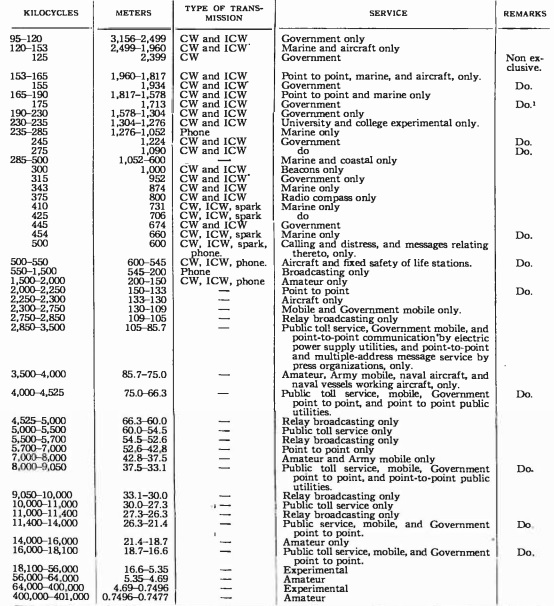Here are what the U.S. frequency allocation chart looked like ninety years ago, as shown in the July 1926 issue of Radio Broadcast magazine.
These allocations had been adopted at the Fourth National Radio Conference, and differed only slighly from those adopted at the earlier conference.
As you can see, some of these allocations are familiar. Marine uses were between 235 and 500 kHz, with the calling and distress frequency set at 500 kHz. The broadcast band was set at 550-1500 kHz, with no allocations yet set for shortwave broadcasting.
Hams had an exclusive allocation on 160 meters, which extended from 1500-2000 kHz (the lower frequency edge of which was 200 meters, reflecting that hams had been relegated to “200 meters and down” after the war).
Hams also had non-exclusive allocations on 80 meters (3500-4000 kHz, the same as today), 40 meters (a generous 7000-8000 kHz), and 20 meters (an even more generous 14000-16000 kHz).
The ten meter band had not yet been allocated to hams, with the entire range of 18.1-56 MHz designated merely as “experimental.” Hams had not yet been assigned an allocation at 2-1/2 meters, but the 5 meter band was set at 56-64 MHz.
The highest allocation was that to amateurs at 400-401 MHz.
Click Here For Today’s Ripley’s Believe It Or Not Cartoon

